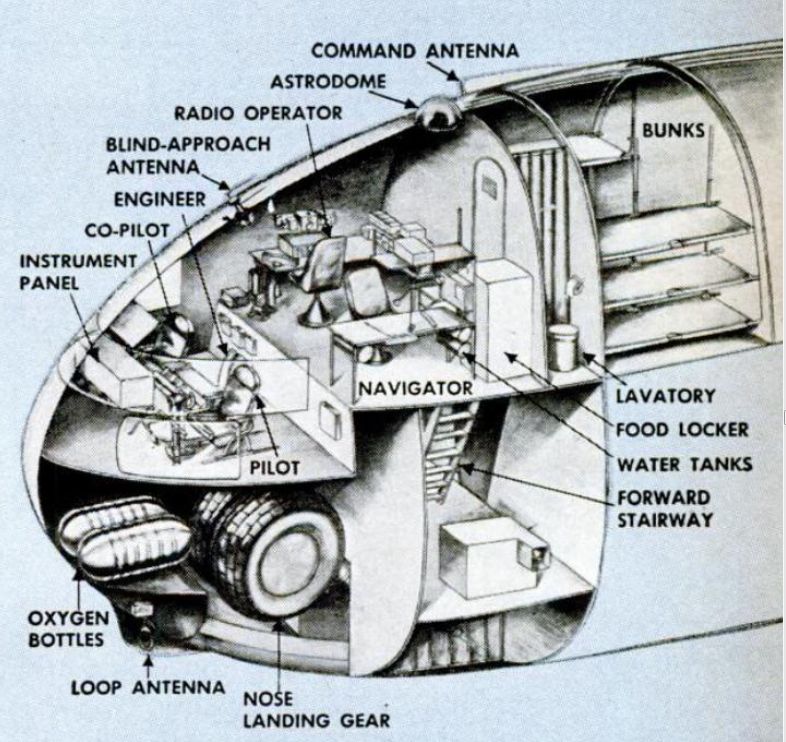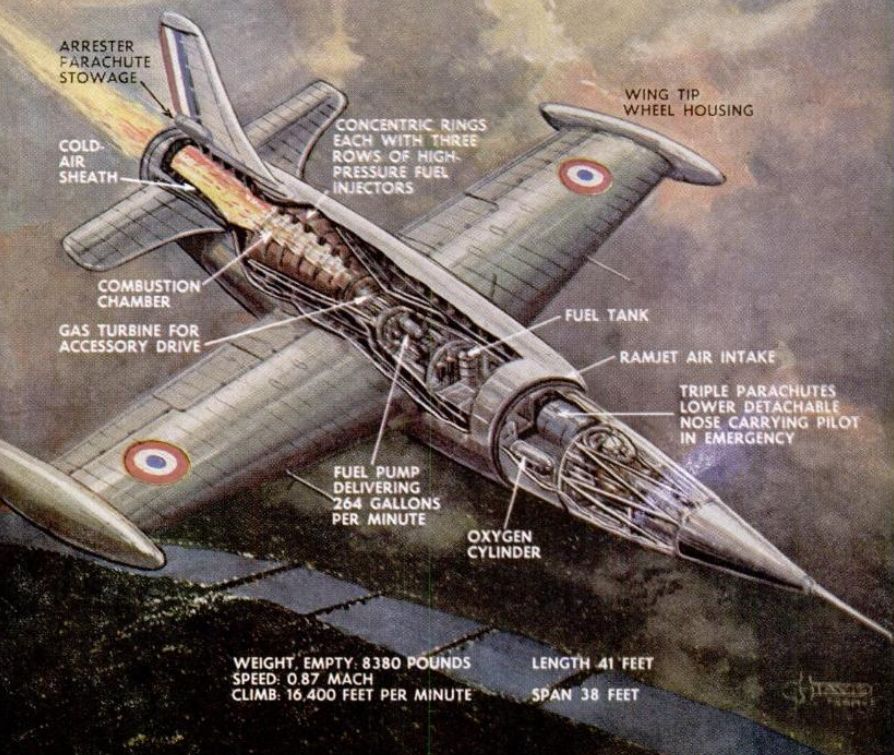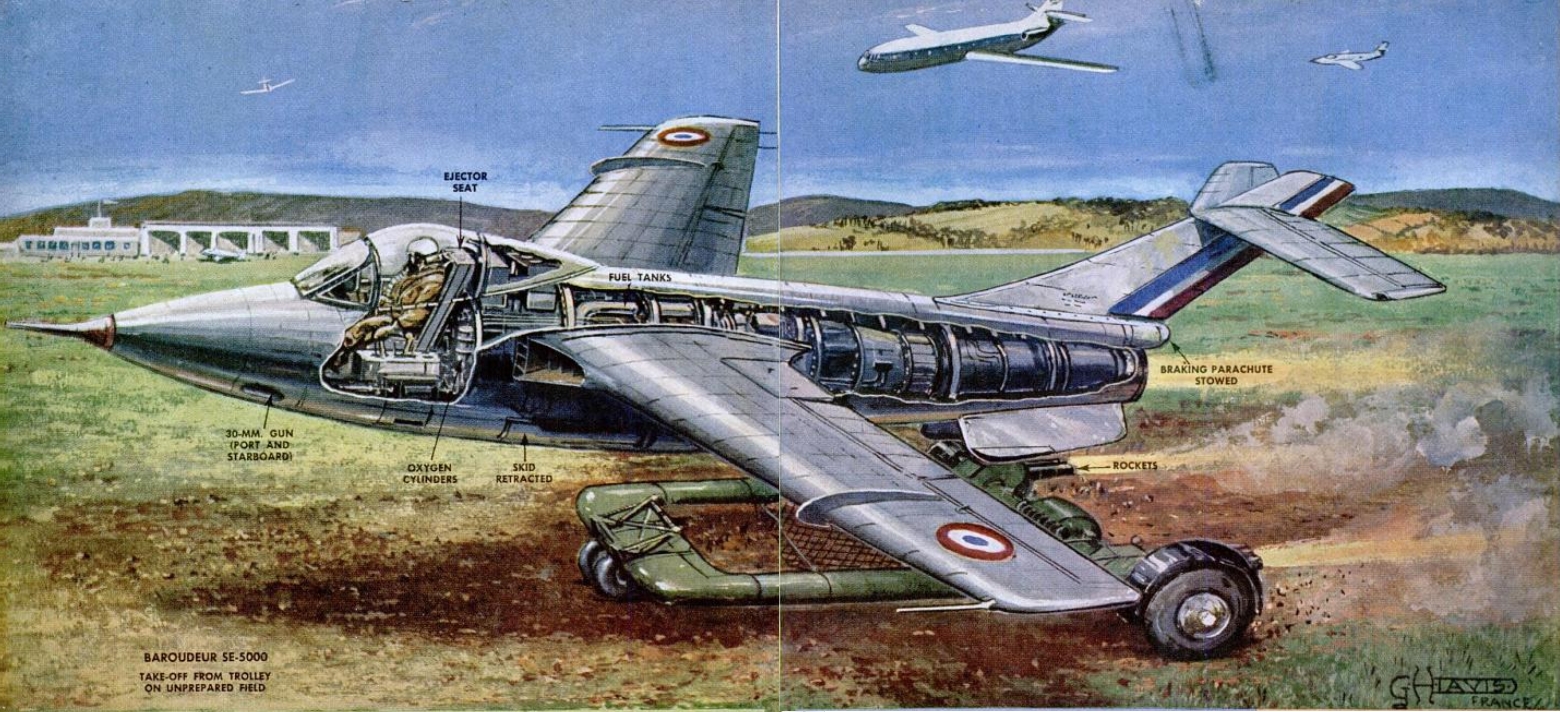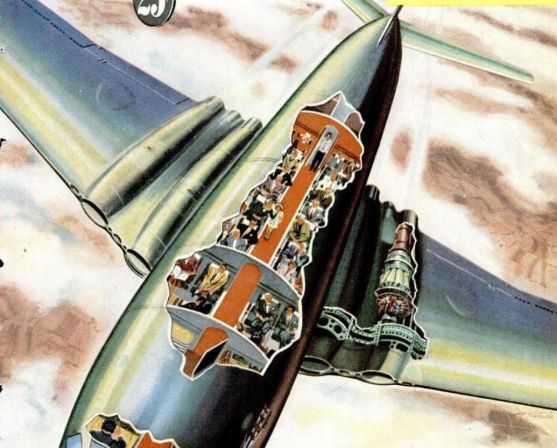You’re looking at a Douglas Skymaster C-54M that has been converted into a 32 litter (bed) “Flying Hospital.”
At the time this cutaway was drawn, the Korean War was in full force. Rather than taking wounded soldiers home by ship or rail, Military Air Transport Service’s (MATS) C-54M took them home far faster and in better conditions.
Litters were a bit cramped (18.5 inches vertical clearance for each patient), but the “Flying Hospital” did have other superior accommodations, such as a full nurse’s station, air-conditioning, and galley for preparation of hot meals.
Click to Enlarge to 1607 x 735 px:

Source: Popular Science April 1951







